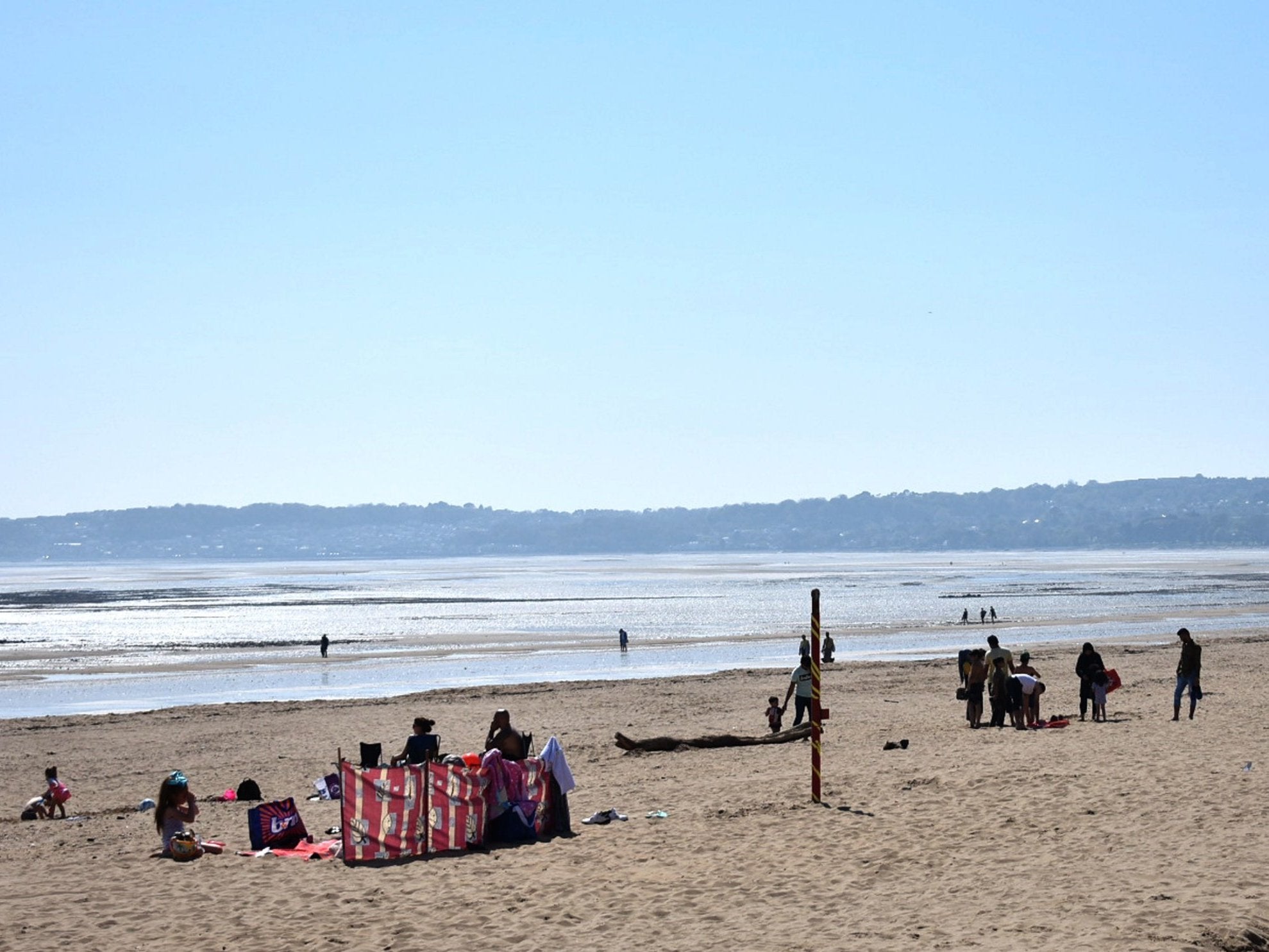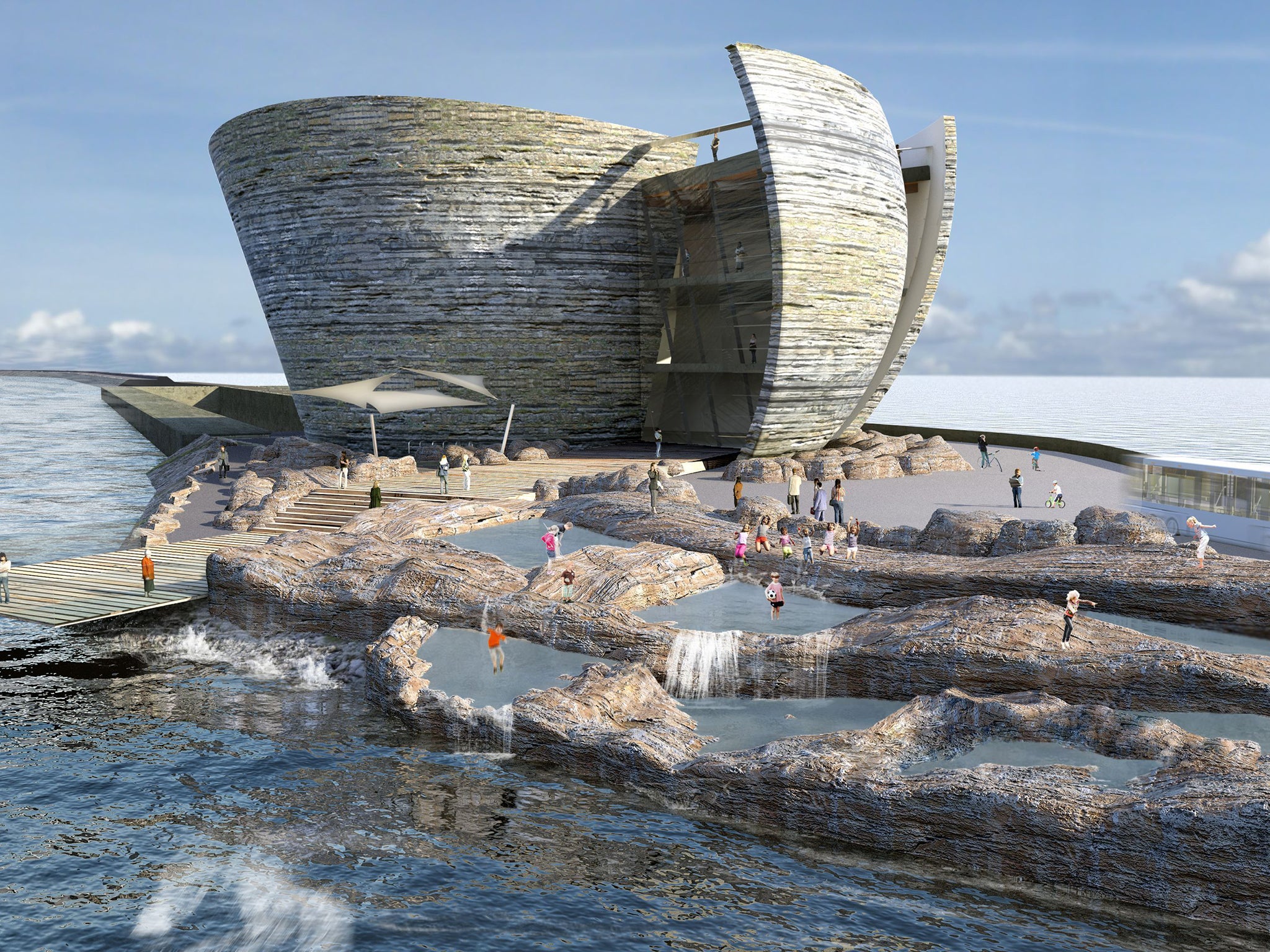Futuristic floating island with 10,000 homes could be built off Welsh coast
‘This has already been successful in countries like Holland, Germany and Denmark, providing a sustainable solution to issues including population density and climate change,’ Swansea’s council leader says

Your support helps us to tell the story
From reproductive rights to climate change to Big Tech, The Independent is on the ground when the story is developing. Whether it's investigating the financials of Elon Musk's pro-Trump PAC or producing our latest documentary, 'The A Word', which shines a light on the American women fighting for reproductive rights, we know how important it is to parse out the facts from the messaging.
At such a critical moment in US history, we need reporters on the ground. Your donation allows us to keep sending journalists to speak to both sides of the story.
The Independent is trusted by Americans across the entire political spectrum. And unlike many other quality news outlets, we choose not to lock Americans out of our reporting and analysis with paywalls. We believe quality journalism should be available to everyone, paid for by those who can afford it.
Your support makes all the difference.A futuristic floating island with 10,000 homes could be built off the Welsh coast, according to a new report.
The Dragon Energy Island proposal looks to revive a tidal lagoon project in Swansea Bay that was rejected by the government in June last year.
The proposal includes building an underwater data centre, a solar farm and giant underwater turbines that could power thousands of homes over a period of 120 years.
Councils and other public sector organisations could buy electricity directly from the energy island, according to the report by Holistic Capital.
Houses would rise and fall with the tide so the development would also be resilient to sea level rise, it stated.

The plans were “financially viable” and 30 per cent cheaper than the estimated £1.3bn of the previous plan, the report said.
Developers are looking to get financial backing for their plan as well as planning consent which would come from the Welsh government.
Construction could start in 2021, with the Dragon Energy Island potentially operational by the end of 2026, the report said.
Rob Stewart, Swansea Council leader and chair of the task force which commissioned the report, said there was huge support to deliver the project.
“The new proposal is a larger and more ambitious renewable energy development that’s built upon the natural tidal benefits of Swansea Bay and complimentary technology to generate zero-carbon power,” he said. “The tidal lagoon is at the heart of the new proposal and gives us the opportunity to create a new floating community of homes and businesses within the sea wall.
“This has already been successful in countries like Holland, Germany and Denmark, providing a sustainable solution to issues including population density and climate change.”
Mr Stewart said the project would create thousands of jobs and be at the “forefront of worldwide marine energy innovation”.
The report is due to be considered by the Swansea Bay City Region Joint Committee before next steps are explored. The search for a private sector partner is set to get under way this summer.
A total of 11 companies and institutions have already expressed interest in the scheme.
Mr Stewart said: “It will greatly reduce our carbon footprint and has the potential to benefit residents and businesses across Swansea and other parts of the city region for over 120 years. Given the encouraging findings of the Holistic Capital report and the continued strength of support throughout south Wales and beyond for a project of this kind, we’re now more determined than ever to deliver.”
After 18 months of analysis the previous tidal lagoon project was rejected by the government. Business secretary Greg Clark told the House of Commons the project “however novel and appealing” did not demonstrate value for money for consumers and the general public.
Tidal Lagoon Power – the company behind the initial development – claimed the tidal lagoon’s turbines would have been capable of powering more than 150,000 homes for about 120 years, but the project was in need of government subsidies similar to those given to nuclear developments.
Rebecca Newsom, head of politics for Greenpeace UK told The Independent: “As the secretary of state said last year, offshore wind is currently much cheaper than tidal power. What he could have gone on to say was that it’s cheaper because the government invested early to help dramatically bring down the costs and evolve the technology.
“The same logic should be applied when it comes to tidal power. While all new projects should be assessed for wider environmental impacts and value for money, this could be a reliable and entirely predictable source of clean energy which is particularly suitable for the UK’s geography. Someone’s going to do it, but we could have a head start, so why not us?”
Join our commenting forum
Join thought-provoking conversations, follow other Independent readers and see their replies
Comments